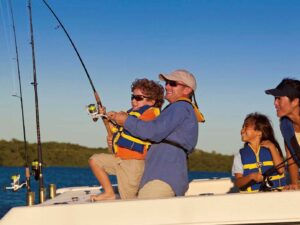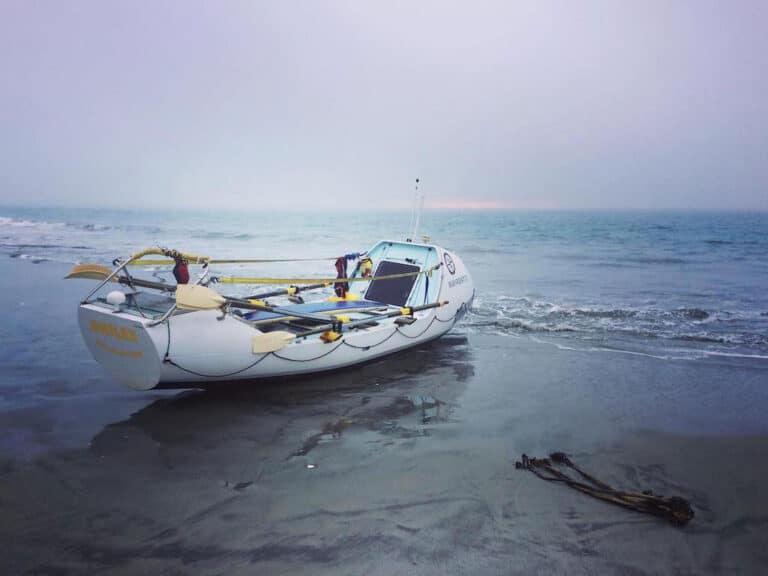
If you head offshore beyond a reasonable swim to the beach, then you need to have a survival suit for every person on your boat. Think that’s too strict? I’ll give you a pass only if you sail the tropics—and only during the summer. (The waters off Key West were 69 degrees in January. Think you’ll survive in waters less than 70?)
The rest of you should have survival suits onboard. They may not be required for pleasure boats, and I know they are expensive, but you could say the same things about EPIRBS. The minimums aren’t always enough.
What is a survival suit?
They go by a few names: survival suits, quick-donning immersion suits or gumby suits. No matter what you call it, a survival suit is typically not a dry suit (though some models come close). Survival suits are not designed to keep all water out; they are designed to keep heat in. They do this by providing a layer of insulation, typically 5mm of neoprene, and restricting the flow of water next to the body.
Also unlike dry suits that are designed for constant wear in adverse conditions, survival suits (of the less-than-$400 variety) are designed to be put on within a minute, right over your clothes and shoes. Donning in the water is difficult and borders on unlikely in bad conditions, but it can be done, and any water inside will be heated by the body.
Survival suits also provide adequate flotation. That feature, along with insulation from cold water, allows them to dramatically extend survival times.
Survival suit sizing
As with life jackets, survival suits should be assigned to individuals and not just randomly pulled from a pile when needed. Too small is too small, and you won’t be able to get the thing on. Too large may be worse than no suit at all because with too much material between the crotch and the neck opening, the suits can ride up over your head in the water, trapping you in a neoprene sack with a big opening at the top.
Try them on before you buy them, right there in the store over whatever you are wearing. And don’t be fooled by size statements like “Adult Universal, 110 to 330 pounds.” That’s absurd.
Some manufacturers make tailored sizes to fit different body types. You may pay a little more, but I promise you won’t be thinking about how much they cost if you ever need to use them.
* * * * *
The U.S. Coast Guard is asking all boat owners and operators to help reduce fatalities, injuries, property damage, and associated healthcare costs related to recreational boating accidents by taking personal responsibility for their own safety and the safety of their passengers. Essential steps include: wearing a life jacket at all times and requiring passengers to do the same; never boating under the influence (BUI); successfully completing a boating safety course; and getting a Vessel Safety Check (VSC) annually from local U.S. Coast Guard Auxiliary, United States Power Squadrons(r), or your state boating agency’s Vessel Examiners. The U.S. Coast Guard reminds all boaters to “Boat Responsibly!” For more tips on boating safety, visit www.uscgboating.org.








